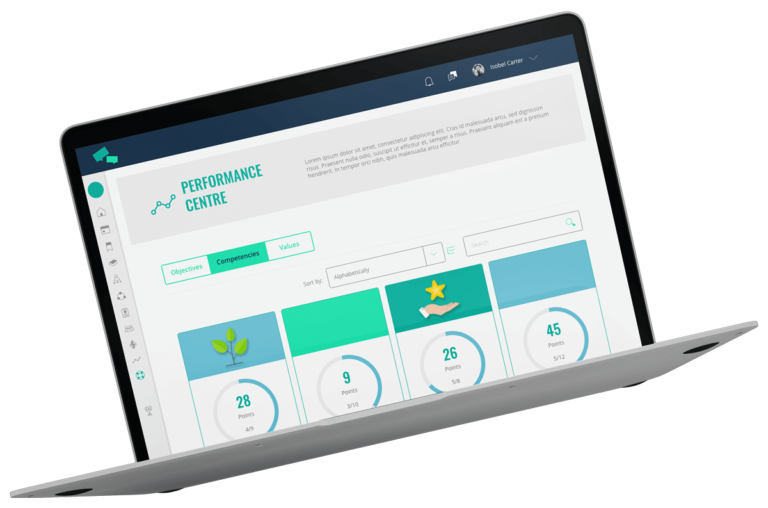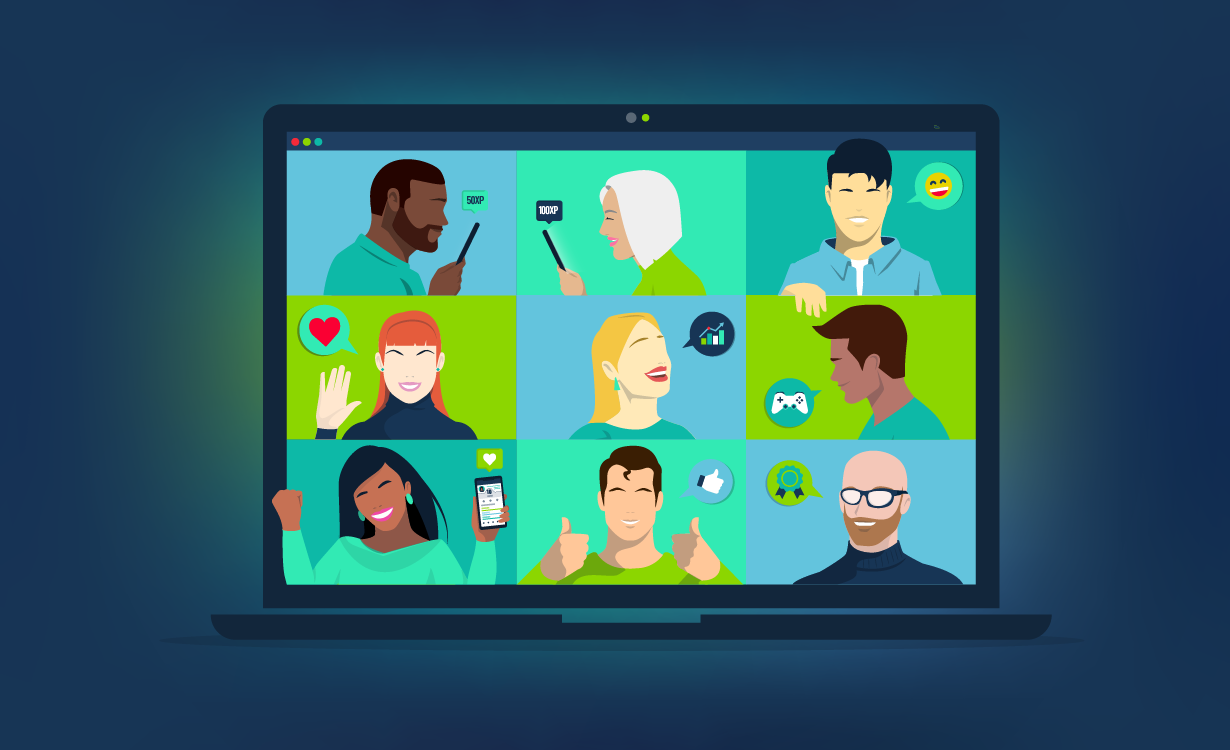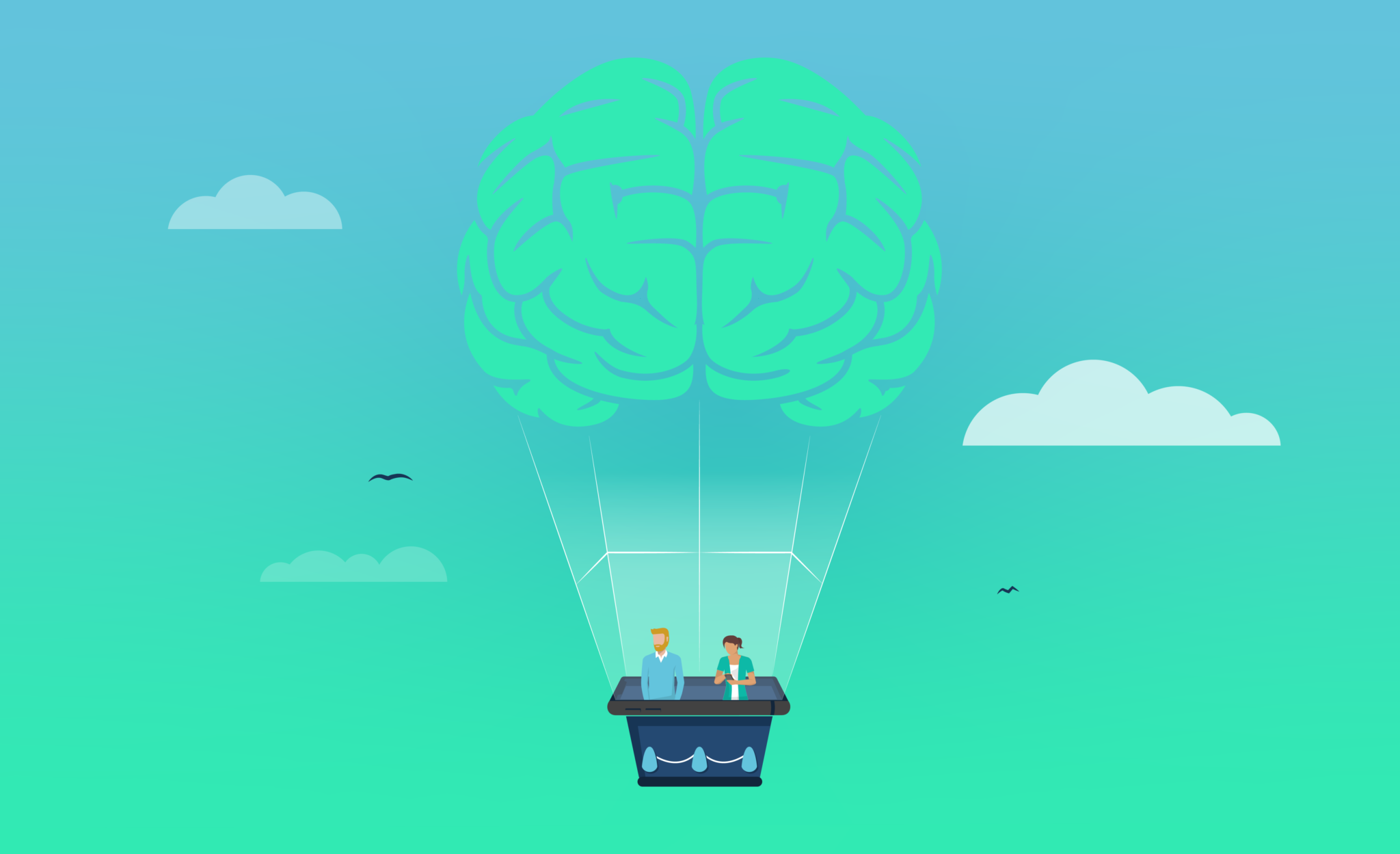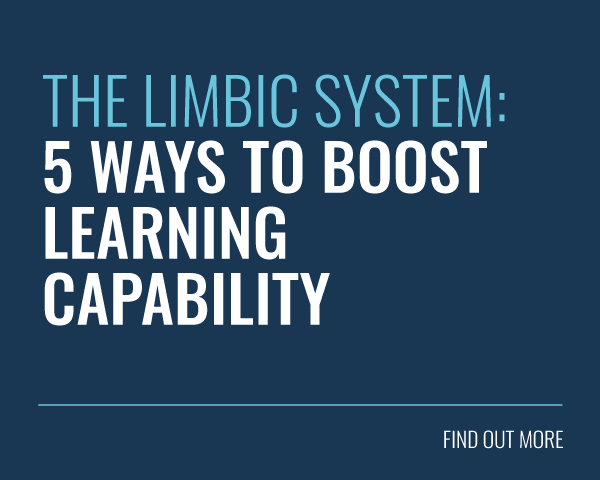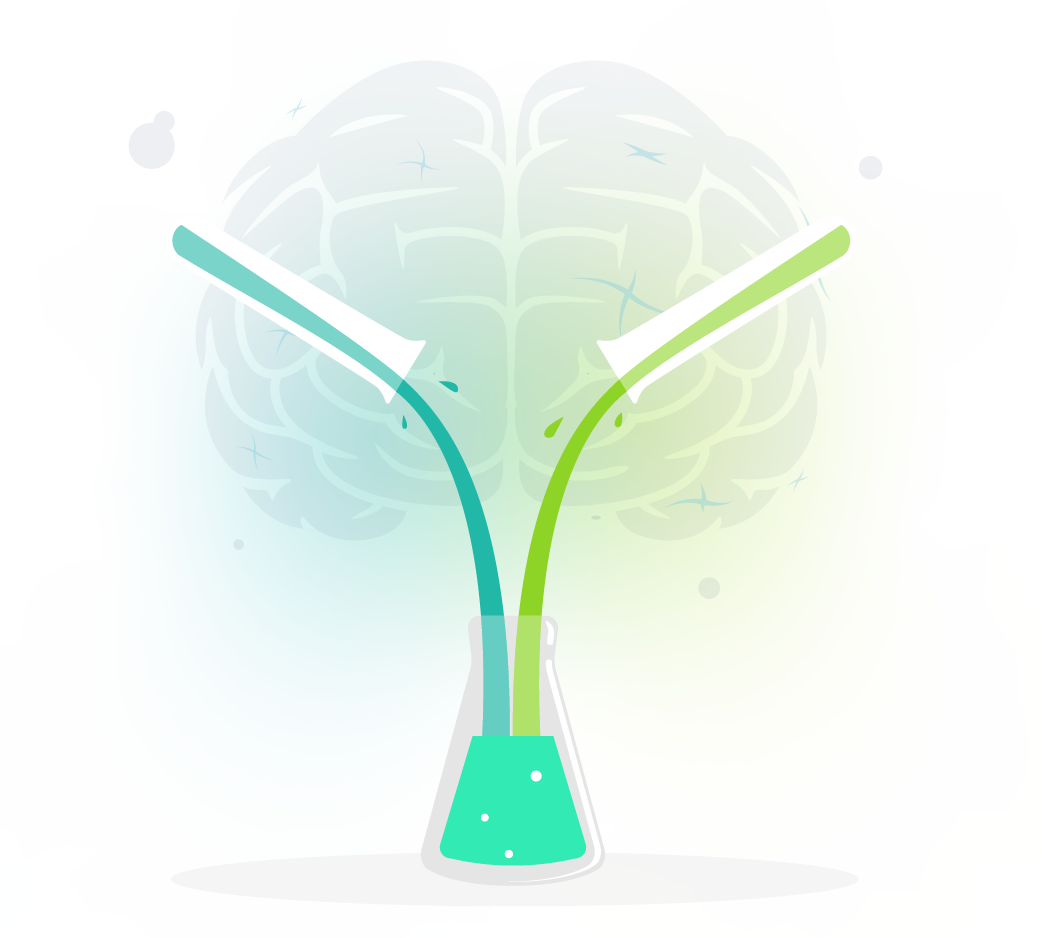 Learner engagement is considered to be the holy grail of any successful learning initiative. Research shows that engaged employees are more productive, more creative and less likely to leave your organisation. However, many organisations struggle with keeping their employees engaged.
Learner engagement is considered to be the holy grail of any successful learning initiative. Research shows that engaged employees are more productive, more creative and less likely to leave your organisation. However, many organisations struggle with keeping their employees engaged.
This is why L&D professionals continue to rank learner engagement as one of their top focuses when it comes to workplace learning.
What is Learner Engagement?
Learner engagement refers to how much attention your audience is giving to your learning content or programme. But this goes beyond simply getting employees to trudge through the material and reach the finish line. Their attention needs to be voluntary.
What’s more, learner engagement involves your employees’ deep emotional connection to the learning experience. In turn, this will influence them to exert greater commitment to your organisation and to its values.
Engaged learners translate to happy and productive employees. This is why learner engagement continues to be a strong predictor of performance during tough and unpredictable times.
5 Levels of Learner Engagement:
Here at Growth Engineering, we further define deep learner engagement as a desired state that can be broken down into five levels: 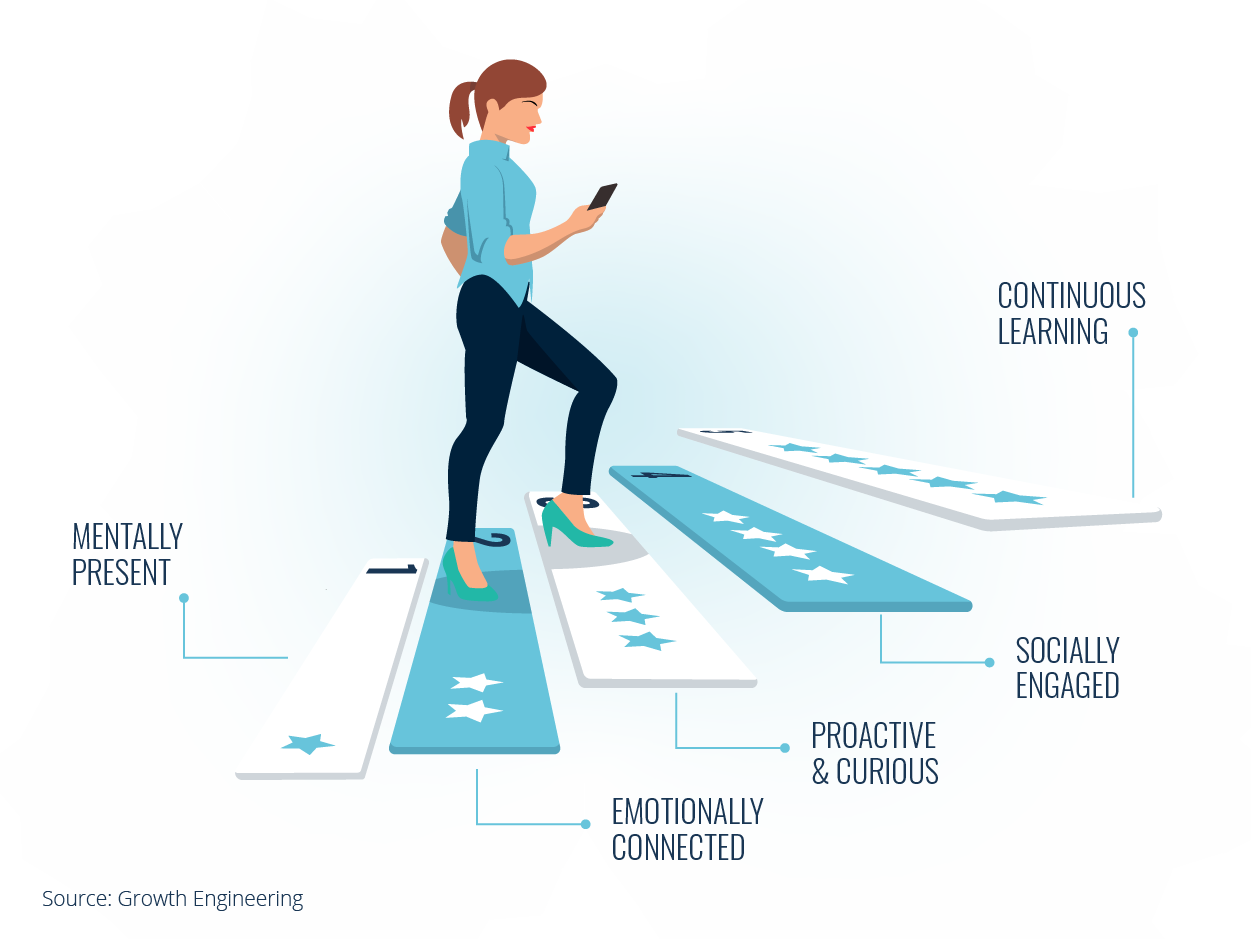
Level 1 – Engaged learners are mentally present:
They are attentive and focused. Moreover, they are challenged by your learning material. This encourages even more active learning and keeps the mental fire burning.
Level 2 – Engaged learners are emotionally connected:
This is characterised by low stress levels and a positive mood state. What’s more, they also derive purpose from your learning programme.
Level 3 – Engaged learners are proactive and curious:
This is highlighted by a heightened combination of mental and emotional engagement. At this stage, employees are proactively progressing through various levels of their learning material. This is driven by their natural desire to discover new aspects of your learning programme.
Level 4 – Engaged learners are socially engaged:
This is marked by a sense of social confidence derived from the learning. As a result, employees are more likely to engage in a culture of social learning and knowledge sharing.
Level 5 – Engaged learners pursue continuous learning:
At this stage, learners have fully committed to your learning programme. When learners are deeply engaged, they enter a brain-body connection, or what we call the flow state. This state has been shown to increase learners’ propensity to pursue learning on a daily basis. In turn, this is what will drive employees to sustain healthy learning habits.
The Neuroscience of Learner Engagement
In this article, we’ll explore learner motivation and activity in more detail. And no, it’s not about dangling a carrot (or some other reward) in front of your learners. And it’s not about having the slickest, shiniest learning platform in the land. Securing your team’s undying devotion for your learning programme goes a lot deeper than that.
The answer? It’s getting to the heart, or rather the brain of the matter! And that’s by understanding the neuroscience of learner engagement.
Simply put, it’s all about seeing how our brains work in the context of learning. In turn, this knowledge can help you boost your training strategies to attain the highest level of engagement from your learners.
Without further ado, here are 9 neuroscience facts that will help you encourage your learners to fall in love with (and commit to) their training experiences.
1. High learner engagement strengthens the brain’s memory and attention circuits
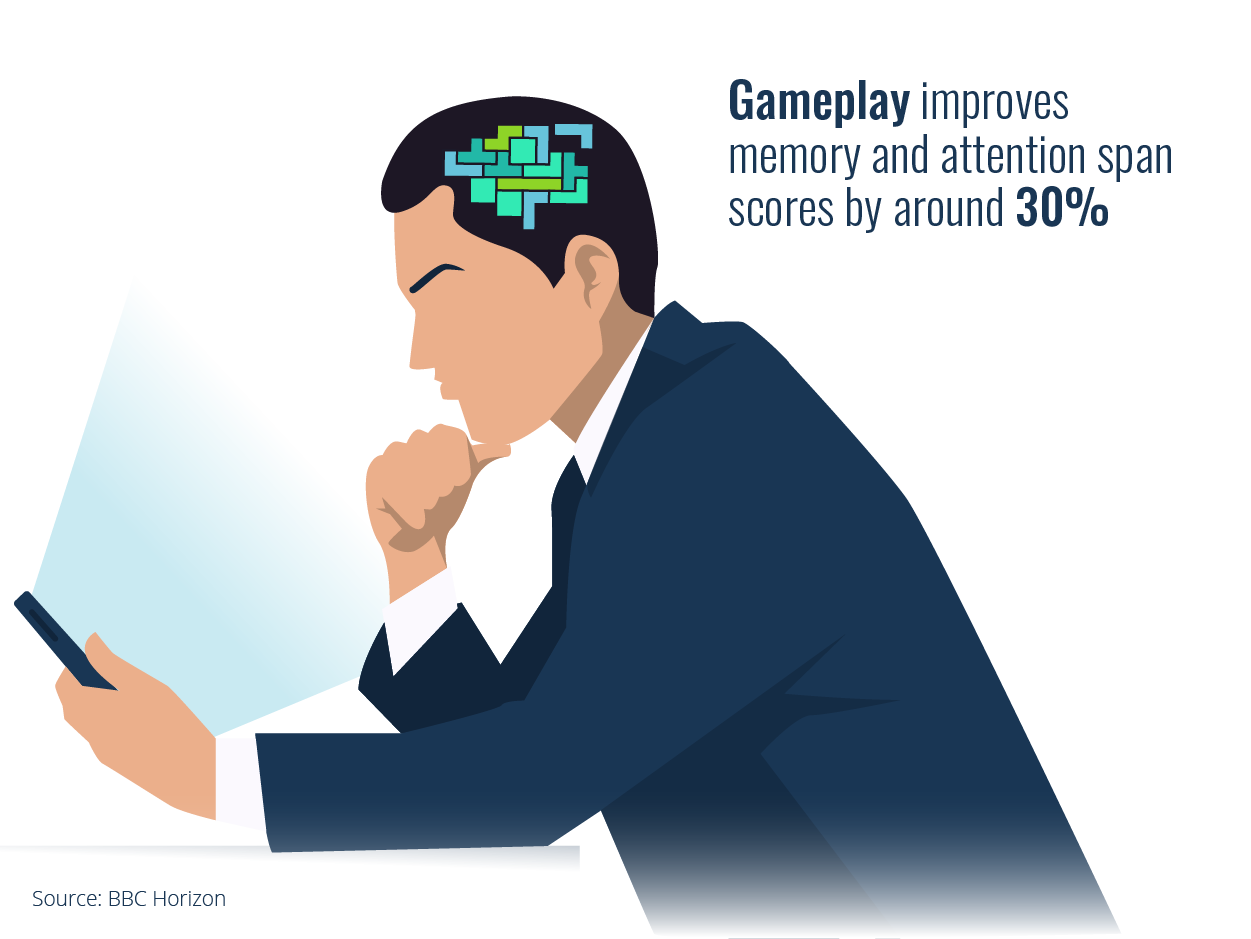 The prefrontal cortex or the executive function of the brain is at its optimal state when learners are engaged. This area is what helps us to focus, play with ideas, use our working memory and think before reacting in any situation.
The prefrontal cortex or the executive function of the brain is at its optimal state when learners are engaged. This area is what helps us to focus, play with ideas, use our working memory and think before reacting in any situation.
Studies show that memory and attention span scores can improve by around 30% with gameplay. This leads to improved learning and productivity outcomes.
Brain Tip: Gameplay strengthens these executive functions by improving memory and attention spans. Consider gamifying your online learning activities to improve learning comprehension and retention among your learners.
2. Learner motivations and actions are activated by the limbic brain
Our brain scans the environment five times per second for stimuli that may lead to either a threat or a reward.
As such, high engagement in training is often driven by lighting up our brain’s reward centres. These are located in the limbic brain. Similarly, disengagement is often characterised by the activation of our brain’s threat circuitry.
Brain Tip: The SCARF Model summarises a wide range of social, cognitive and affective neuroscience findings into five domains of threat or rewards. By maximising rewards and minimising threats, managers can increase learner engagement. One way to maximise their reward circuits would be to provide your learners with active feedback. Similarly, you can minimise feelings of threat by reducing employees’ uncertainty. Real-time scorecards can give your learners more certainty over their progress at any point of their training.
3. Dopamine stimulates high learner engagement and excitement
 Our brain loves a good challenge. It also constantly seeks novelty. In turn, when it is fed with these two things, it rewards us by releasing dopamine. This is known as the ‘feel good’ neurotransmitter, because it, well… makes us feel good.
Our brain loves a good challenge. It also constantly seeks novelty. In turn, when it is fed with these two things, it rewards us by releasing dopamine. This is known as the ‘feel good’ neurotransmitter, because it, well… makes us feel good.
As such, learners are treated to a good dose of dopamine when learning material comes with enough challenges and new surprises. In the L&D world, you might call this the “learner’s high”. When your audience is high on learning (thank you dopamine!), they will naturally seek out more content to maintain this happy state.
Brain Tip: Gamification is a powerful approach in order to transform dull learning into an exciting and addicting affair. The use of game mechanics such as XP and badges encourages learners’ constant craving for discovery and rewards.
4. Our brains can only absorb and process a set amount of information
Our brains have a limited capacity when it comes to absorbing a volume of information at any one time. When learners face an overwhelming amount of information, the brain produces cortisol (also known as the stress hormone). Unfortunately, high levels of this chemical can disrupt memory retrieval and the ability to absorb information.
Statistics show that stress is a critical factor to why over 51% of US workers become disengaged at work. Similarly, 41% of workers say stress leads to a loss in productivity. As such, instructional methods should avoid overloading the brain with too much training material. This will prevent you from overwhelming your learners and reduce your ‘drop out’ rate significantly.
Brain Tip: Reduce cognitive overload with microlearning. This enables you to break up your learning material into manageable chunks to aid in better absorption.
5. Serotonin keeps learners engaged for a long period of time
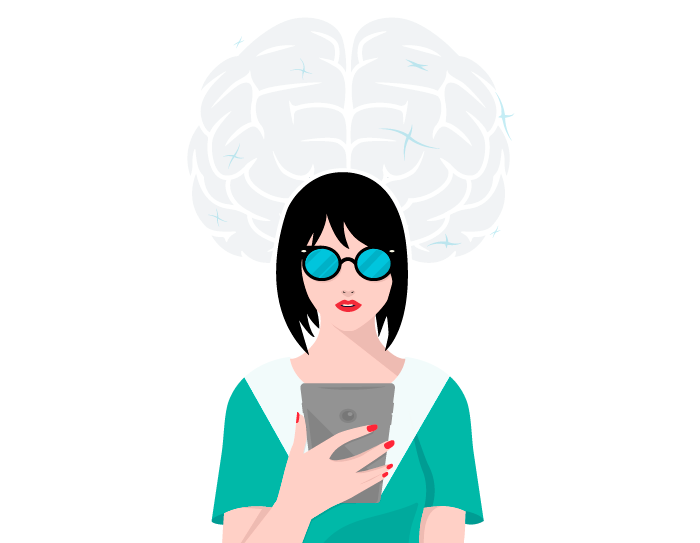 Studies show that 74% of employees derive job satisfaction from having a sense of purpose in their workplace. In turn, this encourages them to stay with their companies for longer. Similarly, when employees are satisfied with your learning, they are likely to remain engaged with it for a long time.
Studies show that 74% of employees derive job satisfaction from having a sense of purpose in their workplace. In turn, this encourages them to stay with their companies for longer. Similarly, when employees are satisfied with your learning, they are likely to remain engaged with it for a long time.
Serotonin is a hormone that governs our overall mood. We could consider serotonin to be the brain’s trusty cheerleader. It’s instrumental in helping to satisfy and sustain learner engagement levels.
How do you release this happy hormone? Ensure your learning programme links to your audience’s desire for purpose. To do this, learning incentives should be tied to deeper motivations. These intrinsic motivations may vary for different types of learners. This is why you should devote as much time as needed to really understand your audience’ needs.
Brain Tip: The Octalysis Framework can guide you when it comes to designing gamified learning filled with epic meaning. This framework helps define the right game mechanics that will resonate with your learners’ internal drives and values.
6. Social learning builds the brain’s neural pathways
Our brains have evolved to constantly seek social support and connection with others. In fact, our brain’s reward centres light up during positive social interactions. This strengthens our neural pathways which aid in better decision-making and goal-directed behaviour.
Social learning stimulates positive emotions, neuroplasticity and learning. In fact, the latest LinkedIn L&D report shows how social learning drives 75% of the knowledge employees obtain in the workplace. The report also reveals that learners who use social features engage in 30x more hours of learning content than learners who don’t. As such, adding social functionalities to your online learning technology can greatly enhance engagement levels.
Brain Tip: Our mobile learning app (The Knowledge Arcade) comes with social functionality like Clubs and social feeds. These help to create a thriving social environment which fills learners’ need for community and support. What’s more, it creates a conducive platform for real-time interactions and knowledge sharing.
7. Oxytocin promotes better trust and support for your learning programme
 There’s no question that trust is an essential ingredient to any committed healthy relationship. In the L&D world, this means earning the trust of employees so they can engage and commit to your learning programme.
There’s no question that trust is an essential ingredient to any committed healthy relationship. In the L&D world, this means earning the trust of employees so they can engage and commit to your learning programme.
A Harvard study shows that employees who work in companies with a high trust culture experience 74% less stress. They are also found to be more engaged and are twice as productive!
Luckily, we can call on the help of oxytocin, the brain’s bonding hormone. Positive social interactions trigger the brain to release this chemical. In turn, this neurotransmitter increases feelings of trust and security.
Similarly, personal or familiar surroundings can also stimulate oxytocin. This is because it lowers the threat of uncertainty, while providing us with a sense of familiarity.
As such, you can induce this comfort-inducing hormone by personalising your learning programme. You can do this by creating custom training content to suit different learner types. Another way is to keep lines of communication open throughout your audience’s learning journey.
Brain Tip: Growth Engineering’s Genie authoring tool can help you create personalised microunits and quizzes for your learners. You can then easily upload this to our online learning platform or mobile app.
8. Deep engagement happens when learners enter the “Flow State”
 Research shows that the best moments of our lives are when our bodies and minds are voluntarily engaged in a particular activity. This is what we might call being ‘in the zone’ or in a ‘flow state’. The science further shows that such a state can only be achieved with deliberate intention and effort. It is also important to recognise that certain activities are better suited to promote a flow state than others.
Research shows that the best moments of our lives are when our bodies and minds are voluntarily engaged in a particular activity. This is what we might call being ‘in the zone’ or in a ‘flow state’. The science further shows that such a state can only be achieved with deliberate intention and effort. It is also important to recognise that certain activities are better suited to promote a flow state than others.
Deep engagement in learning is one of these activities. This happens when learners are mentally, emotionally and physiologically engaged at the same time.
The flow state also creates a conducive environment for your learners to feel a sense of competence in their abilities. In turn, this motivates them to keep learning and growing!
As such, achieving the highest state of learner engagement isn’t just about activating one area of the brain. Instead, it is a coordinated effort of both our thinking and emotional brain systems. More importantly, it also means addressing psychological and physiological needs. Maslow’s hierarchy of needs theory explains this further.
Brain Tip: Create an optimal learning environment by approaching learner engagement with a holistic view. Seek to create healthy learning experiences that will nourish your employees’ overall well-being.
9. A strong hippocampus facilitates effective long-term learning
Our brain’s reward system encourages us to repeat desirable behaviours. Over time, this is what forms habits. A habit is at the root of every behaviour change. You can’t have one without the other.
The hippocampus is an area of the limbic brain which facilitates the formation of habits. It does this by linking both working and long-term knowledge. In the context of learning, highly engaged employees show a strong activation in this region.
As such, ultimate learner engagement is all about getting employees to form healthy learning habits. And when they do, you can thank the hippocampus for it!
Brain Tip: Habits are formed when employees associate your learning programme with positive experiences. Online learning management systems such as The Academy LMS should help you check off all the engagement mechanisms you’ll need to captivate your audience from the get-go!
Final Words
The success of any learning programme is predicated on its ability to engage its audience throughout the whole process.
Our brains are wired to seek out enjoyable learning experiences. By understanding how and why our brains work, it can help us craft better learning programmes for our employees.
Real engagement can only happen when various brain functions operate in a harmonious and balanced way. An optimal learning state is achieved when employees are filled with a healthy synergy of happy hormones, epic meaning and an overall sense of wellbeing.
As such, it is best to design your learning programmes with a holistic view of the needs of your learners. This requires considering their cognitive, emotional and physiological states. Doing so ensures that your employees are learning at a highly engaged level. In turn, this is what will drive real behaviour change and create lasting impact in the workplace.
At Growth Engineering, our learning technology solutions are driven by neuroscience to create real learner engagement. We do this by harnessing our expertise on social learning, personalisation and gamification. By baking these approaches into our learning suite, we’ve created the ultimate engagement engine for learners.
Eager to get your hands on more brain-bulging facts? Feed your learner’s high by discovering the essential learning theories necessary for effective training. Download our white paper: Using Learning Theories & Models to Improve Your Training Initiatives now!
Drive Unlimited Learner Engagement Create Serious Business Impact
